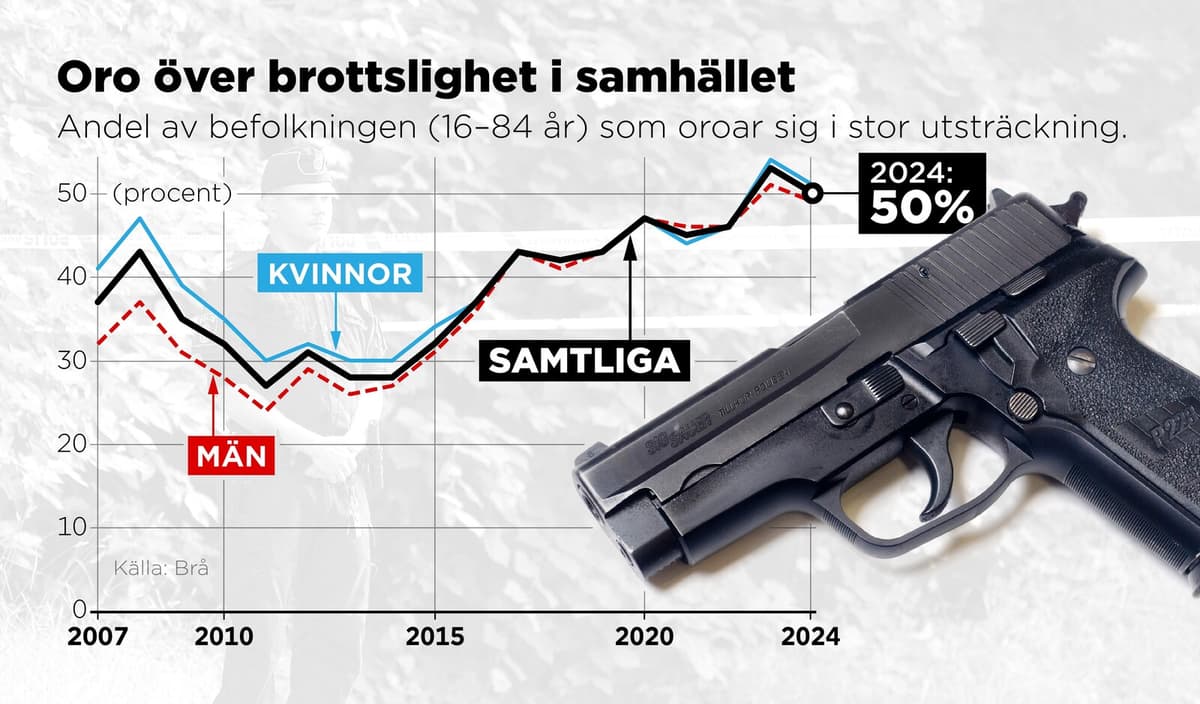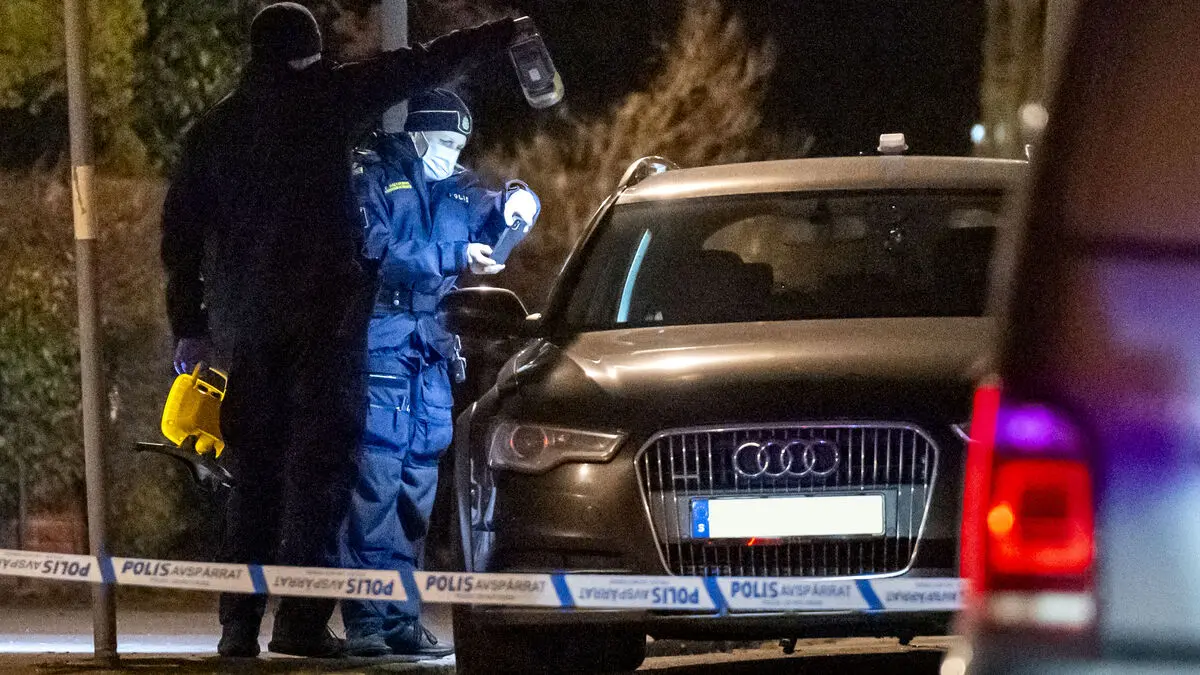Shootings, explosions, and a high terror threat – many are still worried about crime in society.
In the new safety survey from the Crime Prevention Council (Brå), 50 percent state that they are worried. This is a small decrease compared to last year's record figure. However, it is still the second-highest figure ever and a significantly higher level than ten years ago, when 28 percent were worried.
At the same time, almost one in four states that they feel unsafe when they are outdoors late in the evening in their own residential area. This is also a small decrease compared to last year, but the sense of unsafety varies between different groups.
Abstaining from activities
In vulnerable areas, twice as many (40 percent) feel unsafe, compared to those who live in areas with good socioeconomic conditions.
It is also more common in vulnerable areas to worry about being exposed to assault, robbery, theft, or vandalism on one's car, or to abstain from some activity due to fear of crime.
At the same time, there are slightly fewer in vulnerable areas who worry about crime in society at large and about relatives being affected by crime, compared to those who live in areas with good conditions.
Trust in the judicial system is also increasing in this year's survey, after having decreased last year. The police are the institution that is increasing the most, and which also has the highest overall trust, 60 percent.
Fewer sexual offenses
When it comes to exposure to individual crimes, the trend is going in different directions.
More people state that they have been exposed to fraud, while fewer have been affected by sexual offenses. The decrease in sexual offenses is clear, 3.8 percent state that they have been exposed, compared to 4.7 percent in last year's survey.
The proportion of those who state that they have been exposed to threats has also decreased slightly. However, the downward trend from 2020 has been broken for robberies, and in this year's survey, the proportion of those exposed is the same as the year before.
For crime types such as assault, pickpocketing, online harassment, harassment, burglary, and car theft, the proportion has remained at a stable level over the past three to four years, according to Brå.
Measures the general public's exposure to crime, sense of unsafety, and worry about crime.
Based on web and postal surveys of a selection of over 200,000 people aged 16-84.
Conducted annually by Brå since 2006.
Is considered to be able to represent the Swedish population relatively well.
The 2024 survey is based on responses collected in 2023.





